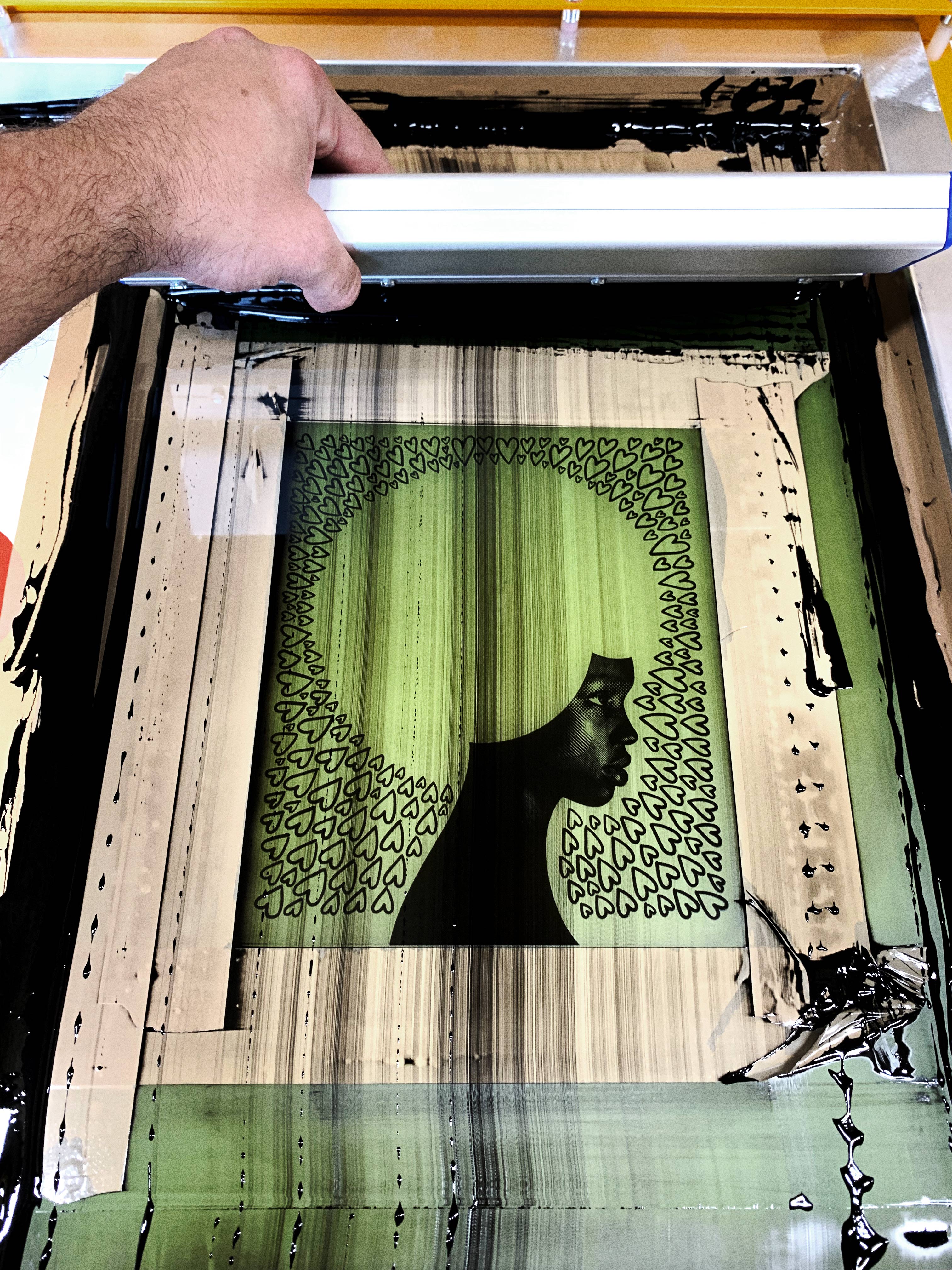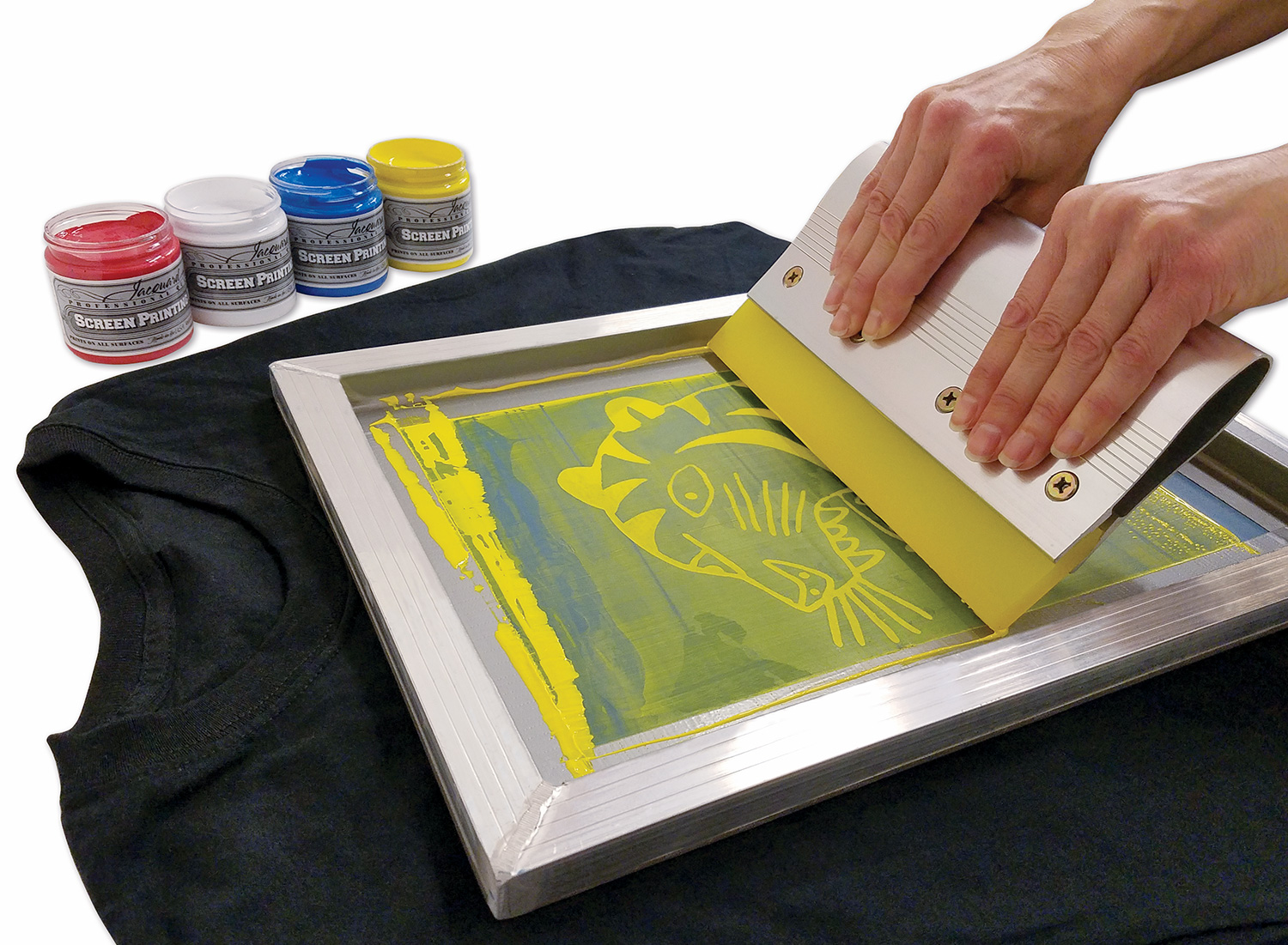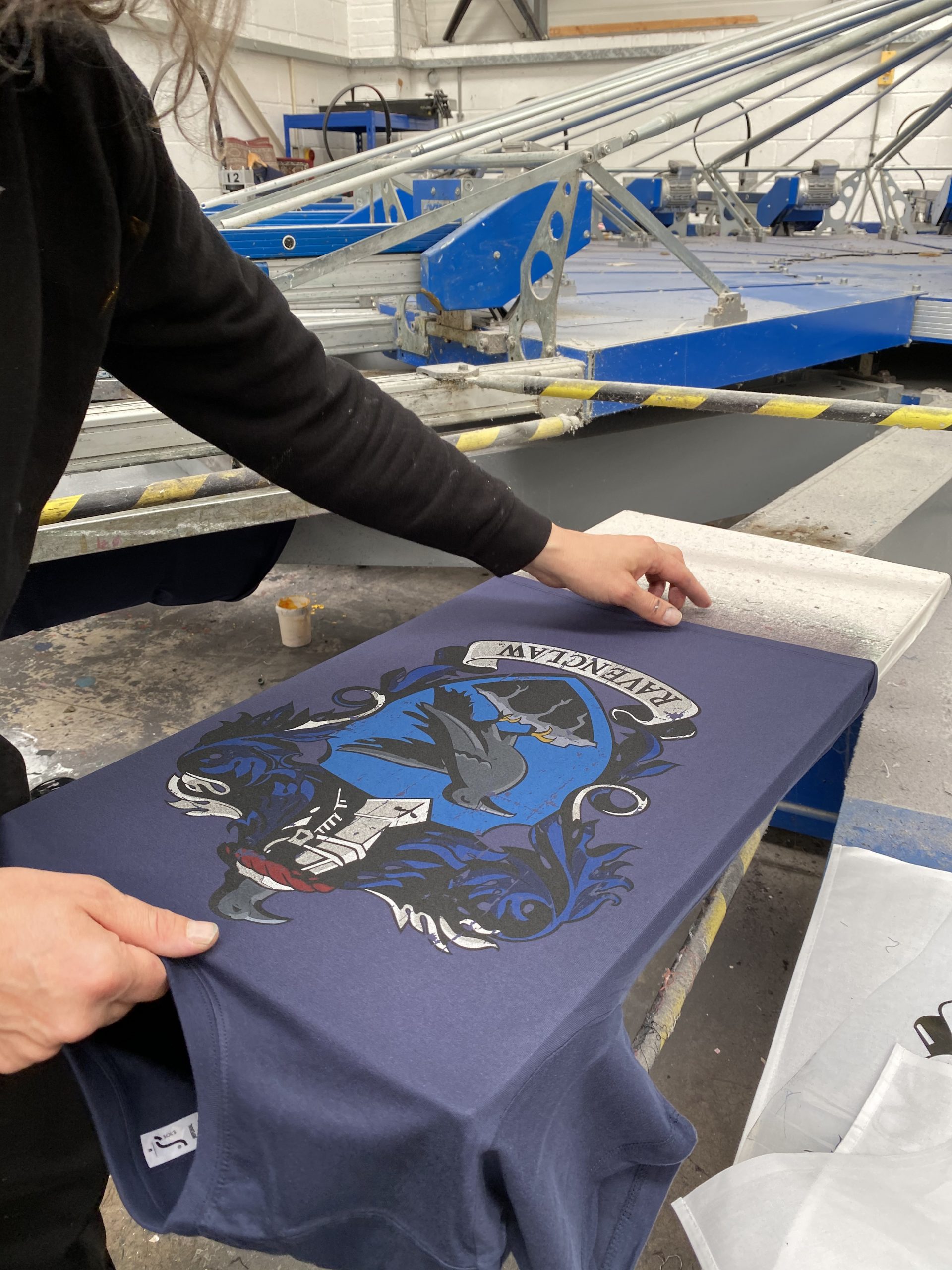ChatGPT said: 10:9 Design Company FAQs: answers to your top questions about their services
Discover the Different Sorts Of Screen Printing Techniques for Your Next Task
Screen printing provides a diverse series of methods that can boost any kind of imaginative task. From conventional approaches like serigraphy to contemporary innovations such as direct-to-garment printing, each strategy has its distinct benefits. Specialized options, consisting of green and metal inks, introduce a lot more possibilities. Recognizing these techniques can significantly impact the last end result. However, the obstacle hinges on picking one of the most ideal method for certain demands and wanted results. What aspects should one consider?

The Fundamentals of Screen Printing
Screen printing may appear complicated, it is fundamentally a simple process that includes moving ink through a mesh screen onto numerous surface areas. The method begins with the production of a stencil, which specifies the layout to be printed. This stencil is affixed to a mesh screen, usually made of polyester or nylon. When the stencil is in place, ink is put on the screen and pushed with the mesh making use of a squeegee, leading to the wanted pattern being printed on the underlying product.
Screen printing can be carried out on a vast array of substratums, including plastic, textile, and paper, making it a flexible choice for different tasks. The process enables dynamic shades and detailed designs, making it prominent in markets such as advertising and marketing, art, and style. Comprehending these essentials outfits individuals with the fundamental knowledge called for to check out more sophisticated techniques in screen printing.
Conventional Screen Printing Techniques
Conventional screen printing techniques have actually been employed for centuries, protecting the workmanship and virtuosity of this technique. This technique uses a mesh screen to move ink onto a substrate, such as fabric or paper, permitting for resilient and vibrant layouts. The process starts with creating a pattern, which obstructs particular areas of the screen to control where the ink will certainly be applied.
One popular technique is serigraphy, typically utilized for creative prints and restricted editions. Another is making use of water-based inks, which are eco-friendly and supply a soft feel on fabrics - 10:9 Design contact. Furthermore, traditional techniques can consist of hand-operated printing, where artisans apply ink with a squeegee, guaranteeing accuracy and attention to detail
These methods remain valued in the market for their responsive top quality and the one-of-a-kind textures they generate, interesting both designers and customers who value the heritage of screen printing.
Digital Screen Printing Innovations
As the need for faster production and customization in the printing industry has actually surged, electronic screen printing advancements have become a game-changer. This modern technology blends typical screen printing methods with electronic procedures, allowing for quick prototyping and complex styles that were formerly tough to accomplish. One significant advancement is the introduction of direct-to-garment (DTG) printing, which helps with high-quality, full-color prints on numerous textiles without the demand for screens. Furthermore, developments in ink solutions have actually resulted in environmentally friendly options that maintain vivid shades while reducing environmental influence. Making use of automated systems better streamlines production, lowering labor costs and boosting precision. These innovations not just accommodate tiny set orders and personalized layouts but also permit quicker turnaround times, making them suitable for businesses concentrated on conference client demands in a fast-paced market. Digital screen printing, subsequently, stands for an essential evolution in the domain of printing strategies.
Specialty Screen Printing Methods
Exploring specialty screen printing techniques exposes a diverse array of strategies that push the borders of creativity and functionality in the printing market. Among these, glow-in-the-dark inks offer an unique visual effect, making styles come alive in low-light problems. Metal inks, understood for their sparkling surface, include a touch of deluxe to printed products. An additional ingenious approach is discharge printing, which gets rid of color from the material rather than including ink, resulting in a soft, classic feeling. High-density printing produces an elevated texture externally, enhancing responsive interaction. Additionally, water-based inks are obtaining popularity for their vivid colors and minimized ecological impact. Each of these specialized techniques caters to details design demands, allowing artists and brand names to develop standout items that reverberate with their audiences. By leveraging these approaches, companies can boost their screen printing tasks to brand-new elevations, guaranteeing remarkable perceptions.
Eco-Friendly Screen Printing Options
Environmentally friendly screen printing options are obtaining grip as the industry shifts in the direction of sustainability. Sustainable ink choices and making use of naturally degradable products are vital elements in decreasing the ecological effect of the printing procedure. By adopting these techniques, screen printers can add to a much more lasting future while preserving top notch outcomes.
Sustainable Ink Options

Biodegradable Products Usage
As the screen printing market evolves, the incorporation of naturally degradable materials is ending up being progressively essential for environmentally mindful methods. Designers and manufacturers are currently exploring inks and substratums made from natural, renewable sources that decompose extra successfully than typical counterparts. These naturally degradable alternatives minimize plastic waste and decrease ecological impact, lining up with the growing demand for sustainable products.
Typical examples include water-based inks and organic cotton fabrics, both of which reduce damaging chemicals and advertise eco-friendliness. Brands that adopt these materials frequently boost their market appeal, drawing in customers that prioritize sustainability. As understanding of environmental concerns continues to increase, the change towards biodegradable materials in screen printing is likely to gain momentum, cultivating a greener sector standard.
Choosing the Right Strategy for Your Job
Just how can one determine one of the most ideal screen printing method for a particular project? The decision pivots on a number of aspects, including the material to be published on, the intricacy of the layout, and the wanted manufacturing quantity - 10:9 Design Abilene. Direct-to-garment printing is ideal for elaborate layouts with many shades, while conventional screen printing excels for larger runs of easier graphics.
Furthermore, consideration of the end-use of the published thing is necessary. For outdoor applications, strategies that offer durability and weather condition resistance, such as plastisol ink, may be preferred. Alternatively, environmentally-conscious projects might take advantage of water-based inks or eco-friendly materials.
Eventually, comprehending the task's special demands enables for an educated choice, making certain both aesthetic charm and practical longevity. By assessing style intricacy, material compatibility, and production range, one can efficiently select the most proper screen printing technique to satisfy their job's goals.
Frequently Asked Questions
What Is the History of Screen Printing?
Screen printing came from in old China around 1000 AD, advancing with Japan and Europe. By the 20th century, it became prominent in business art and style, reinventing how layouts were generated and dispersed worldwide.

Exactly how Do I Prepare Art Work for Screen Printing?
To prepare art work for screen printing, one need to ensure high resolution, use a suitable shade mode, create different layers for each and every color, and convert message to outlines, ensuring compatibility with the printing process and wanted result.
What Products Are Ideal for Screen Printing?
The best materials for screen printing include high-grade inks, sturdy screens, and appropriate substrates like cotton, polyester, or blends. Additionally, utilizing proper emulsion and squeegees can improve the printing process and results.
Can I Screen Print at Home?
Yes, screen printing at home is possible. With the appropriate products, setup, and techniques, individuals can produce premium prints. Nevertheless, careful consideration of workspace and devices is vital for successful results.

What Prevail Errors in Screen Printing?
Typical errors in screen printing include incorrect exposure times, insufficient ink uniformity, misalignment of displays, insufficient cleansing of materials, and ignoring to check prints. These errors can compromise the high quality and precision of the end product.
Screen printing may seem complex, it is fundamentally a straightforward procedure that entails moving ink through a mesh screen onto numerous surface areas. As the need for faster production and personalization in the printing industry has actually surged, digital screen printing developments have actually emerged as a game-changer. Checking get more info out specialty screen printing methods exposes a varied variety of methods that push the borders of creative thinking and functionality in the printing sector. The finest materials for screen printing consist of high-quality inks, long lasting displays, and suitable substratums like cotton, polyester, or blends (10:9 Design Company). Typical blunders in screen printing consist of inappropriate direct exposure times, poor ink uniformity, misalignment of displays, insufficient cleansing of materials, and neglecting to test prints